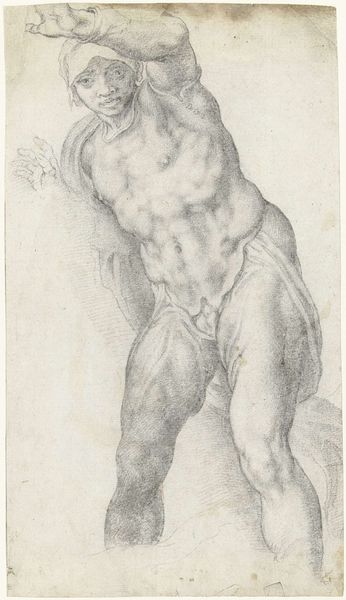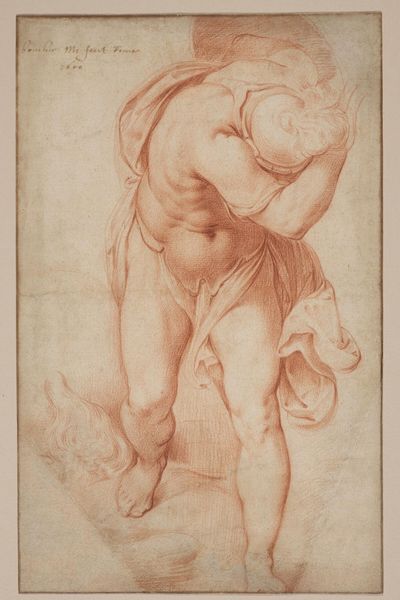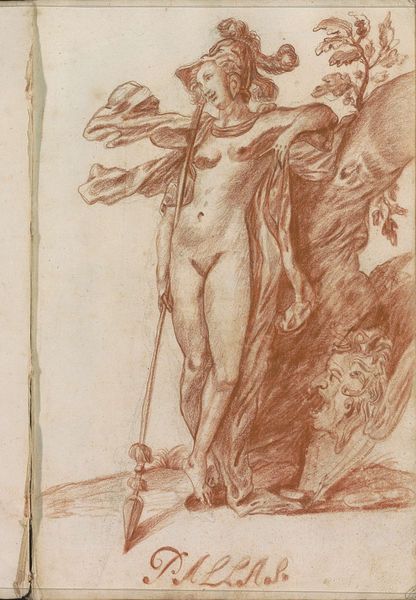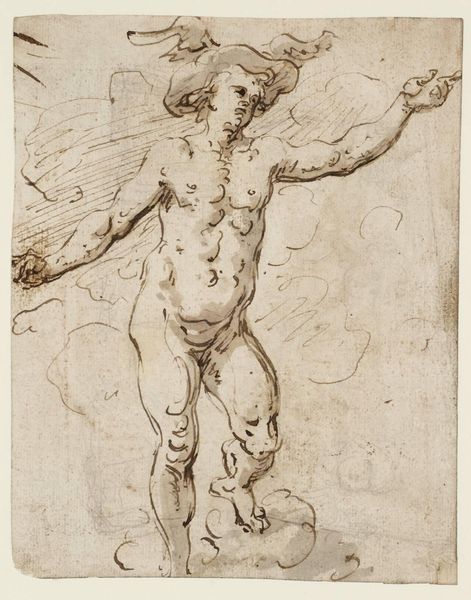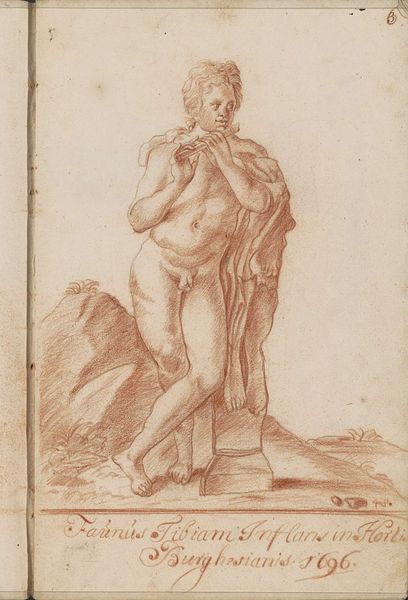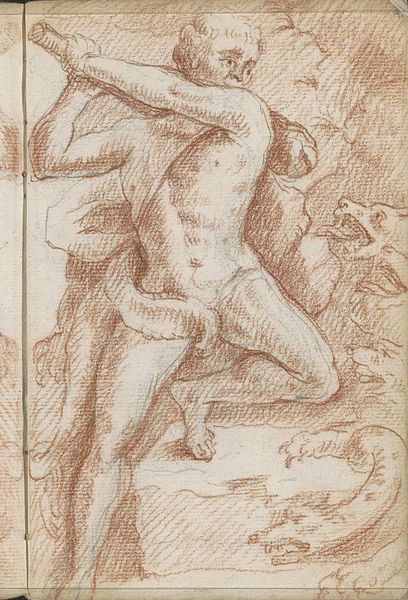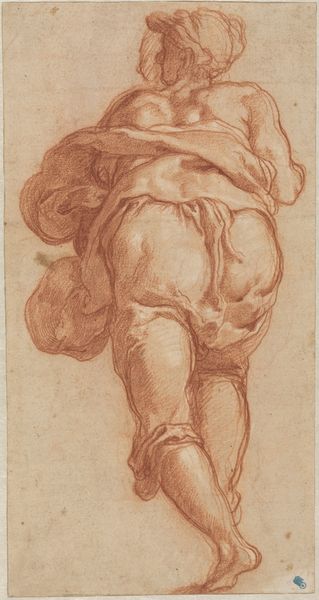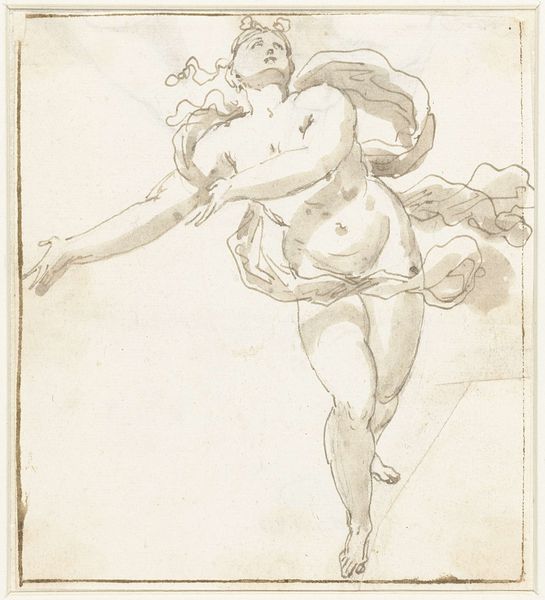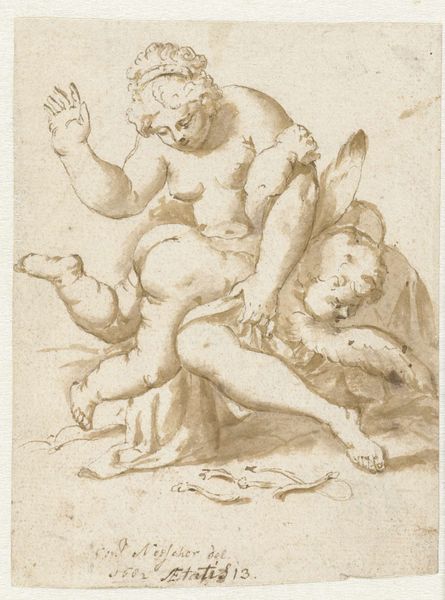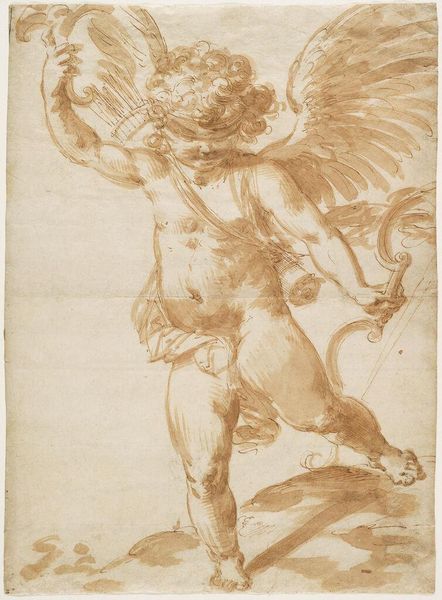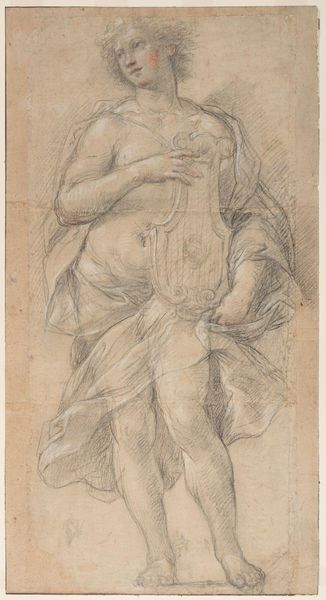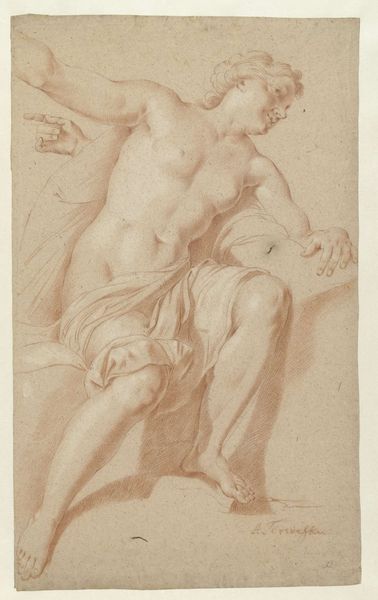
drawing, paper, ink
#
portrait
#
drawing
#
baroque
#
pencil sketch
#
paper
#
ink
#
pencil drawing
#
sketchbook drawing
#
portrait drawing
Copyright: Rijks Museum: Open Domain
Curator: This arresting ink and pencil drawing, executed on paper, is titled “Straf van Haman” and was created by Hendrick van Beaumont around 1696. There's a raw energy here. What catches your eye first? Editor: The figure’s pose immediately evokes dynamism—a sense of upward movement, struggle, even. The warm sienna tones of the ink lend a kind of raw immediacy, a vitality. Is it an angel? Curator: Although the title refers to the "Punishment of Haman" from the Book of Esther, I find the depicted figure does not clearly communicate this biblical narrative. Consider the Baroque era context; there’s an interest in capturing the dramatic essence of a story through idealized, expressive human forms. What iconographic elements seem particularly charged to you? Editor: The outstretched hand—or rather, the *attempt* at outstretched hands. They are awkwardly foreshortened; perhaps intentional? There's something vulnerable in that gesture, despite the overall muscularity of the figure. It contrasts against what could be perceived as an angelic quality from the wings; but angels do not often face punishments, in general... Curator: It is a peculiar detail to notice! Perhaps the figure is not literally being punished in the scene, but he could be dramatically aware of this inevitable consequence and this foreshadowing moment makes the subject so distraught. As a preparatory sketch, Van Beaumont may be exploring an interior psychological state. Editor: So, is he trying to grapple with morality, perhaps? I agree, there's certainly a psychological intensity at play. Even the partially rendered drapery feels significant—as if trying to either conceal or reveal, adding to that tension. Curator: Indeed. And it's that unresolved tension that, for me, really encapsulates the social function of art from this era, to stir the moral compass and offer a grand narrative. It reflects the power dynamics within Dutch society as shaped by interpretations of Biblical texts. Editor: Seeing the wings through a critical lens changes my interpretation completely. I see now more clearly the inherent contrast. The eternal, or supposed eternal freedom granted to angels versus mortal consequences and the fear it strikes. Well, looking at this image from those perspectives has altered my initial interpretation; a sign of the image’s continued cultural relevance, I’d say. Curator: Exactly, it makes the work complex, nuanced, and alive to different generations.
Comments
No comments
Be the first to comment and join the conversation on the ultimate creative platform.
